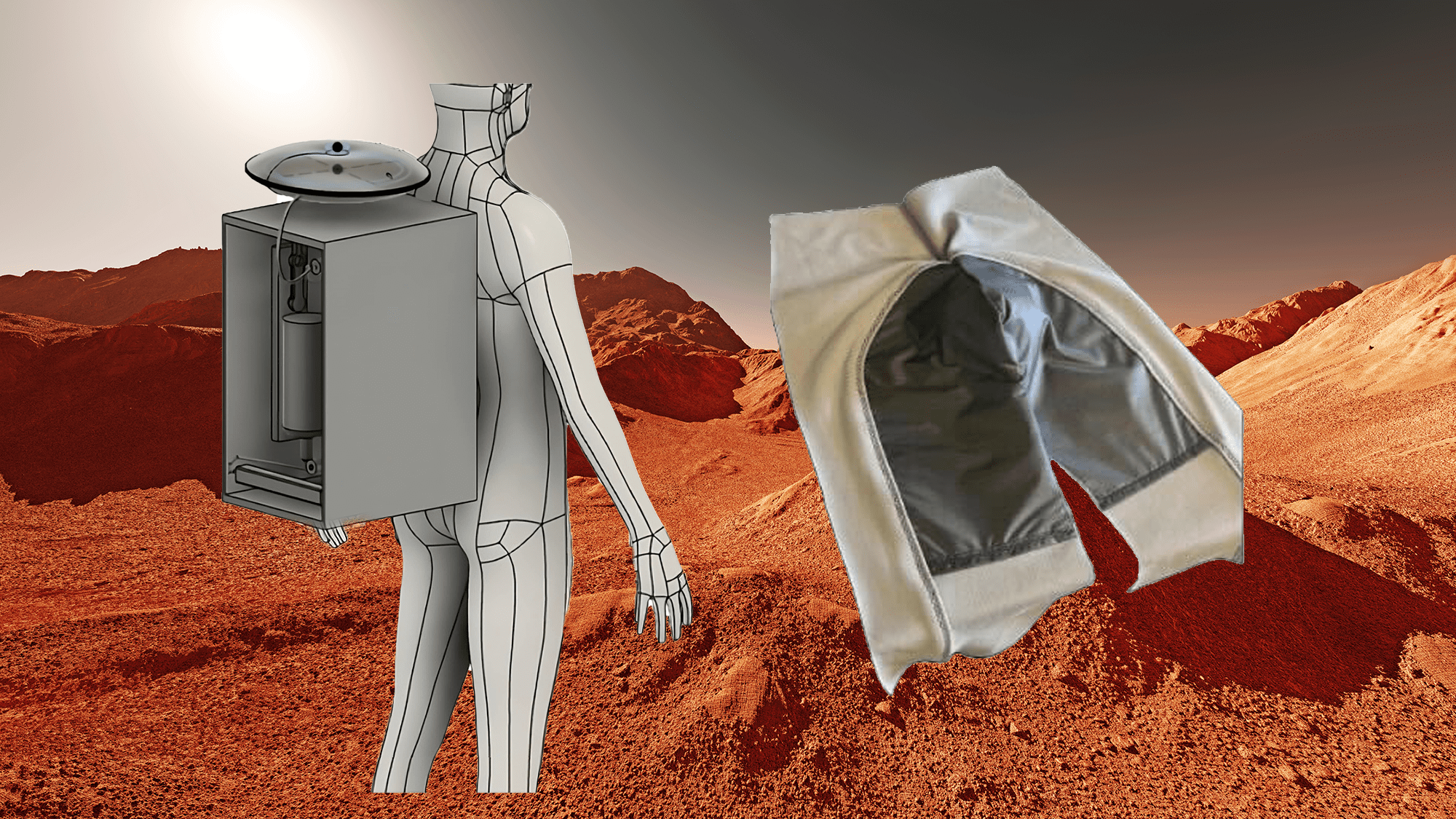Technology
Future astronauts could safely drink their own urine with this Dune-like device

Astronauts of the future traversing barren alien landscapes may soon do so with less fear of running out of water – or awkwardly shuffling through their own puddle – thanks to a new Duneinspired urine filtration system. The small, backpack-like device, created by researchers at Cornell University and detailed today in Frontiers in space technology, could help explorers conduct longer space missions without the need for heavy, cumbersome water reserves. It could also help modernize astronauts’ current approach to dealing with biological waste, which essentially amounts to a large adult diaper.
The new device would use a small silicone catheter to instantly identify and absorb an astronaut’s urine. An onboard integrated reverse and forward osmosis system would filter out toxins and store the remaining liquid as safe drinking water. If successful, researchers say the new filtration system would provide astronauts with a “continuous supply of drinking water” that would allow them to explore their environment without having to lug around heavy water reserves. That simplified mobility could come in handy, especially as NASA plans for several manned moon missions in the coming years in which scientific research will come to the fore.
Astronauts have too much urine and not enough water
The process of relieving yourself during a spacewalk is not glamorous. Current space suits are equipped with a so-called ‘Maximum Absorbency Garment’ (MAG) that can hold approximately 300 times its weight in liquids. MAGs, which despite their shortened title are essentially highly absorbent diapers, can hold about two liters of urine, blood and feces. That may sound like a lot, until you realize how much time space explorers might have to spend outside of a toilet. Astronauts are expected to urinate about seven times a day and undertake a typical spacewalk for repairs or scientific research lasts an average of six and a half hours. (Excursions of more than eight hours are also not unheard of).
To put it mildly, many astronauts are not thrilled with the idea of performing that crucial, often high-stakes job with a sagging bottom. In some cases, researchers say astronauts have chosen to eat smaller, lower-calorie meals to reduce the amount of waste created in their suits. But at the same time, that strategy can compromise their ability to perform at their mental and physical best. Prolonged time spent in a dirty MAG diaper also inherently increases the chance of skin irritation or even infection.
“This is undoubtedly an environment that is not conducive to optimal performance or maintenance of health,” the researchers write.
But wet diapers are only half the problem. Spacewalks are physically demanding operations and can easily lead to dehydration if astronauts are not properly hydrated. Current spacesuits are equipped with one Drink bag in suit (IDB) filled with only 32 ounces of water. Past astronaut simulations Responding to a hypothetical failure of the rover in space resulted in the astronauts swallowing 50%-100% of their allotted water supply. And that’s only now. Future planned Artemis missions to the moon and Mars will require astronauts to spend much more time on spacewalks and exploration missions than they do now. They will need access to much more water to survive in those environments.
“Astronauts currently only have one liter of water available in their hydration bags,” said Sofia Etlin, a staff member at Weill Cornell Medicine and Cornell University Research. “This is insufficient for the planned, longer space walks on the moon, which can last ten hours, and in case of emergency even up to 24 hours.”
The Cornell researchers believe they may have found a solution with a prototype “Urine Collection Device” (UCD) that could address both problems simultaneously. The device would absorb the substances excreted by astronauts, filter them and then add nutrients back in to create viable drinking water. Notably, the process would not apply to feces or sweat. All told, the entire process of filtering a typical 100-500ml urine discharge should take less than five minutes. If any of this sounds familiar, it’s probably because the device sounds similar in concept to the “stillsuits” used in Frank Herbert’s 1965 sci-fi novel that became a Hollywood blockbuster. Dune. In that case, the Fremen of the novel are clothed from head to toe in fabric and sleeves able to convert moisture into very valuable water. The UCD is modest in comparison. The device is shaped like a rigid backpack, has an area of 38×23 and adds eight kilograms of extra weight.
How a urine filtration device would work
In practice, the new filter system would replace the previous diaper with several layers of fabric intended to allow urine to pass easily. Unlike the previous MAG system, which was intended to absorb large amounts of urine, the UCD should do the opposite and absorb as little plant fluid as possible. Astronauts using the new system would wear a gender-specific external silicone catheter that resembles a “cup” that some athletes wear on top of their genitals. An RFID tag attached to an absorbent hydrogel uses a moisture detector to know when the cup is filled with liquid. When the container is full, a vacuum pump is activated to move the urine to the filtering device.

Once initiated, the pee passes through a layer of antimicrobial substance before being pumped to limit the amount of contact it can have with an astronaut’s skin. The device then uses an integrated forward and reverse osmosis system to filter salt and other dissolved substances from the urine. The resulting purified water is eventually enriched with electrolytes and pumped back into the suit’s hydration bladder, where the astronaut can take a sip. Researchers say the filtration system recycles urine into water with an efficiency of 85% and a water recovery of at least 75%. That entire process is powered by a 20.5 volt battery.
The first prototypes for the UCD are already underway. Cornell University Professor of Physiology and Biophysics and lead author of the study Christopher Mason says the device can be tested in simulated microgravity conditions, similar to what future Artemis astronauts might experience. And while the device adds extra weight and battery considerations that can complicate a spacesuit, the researchers claim that the trade-off in terms of hygiene and water storage is “worth it.”
This is actually not the first time that some have tried to realize certain elements of it DuneStill suits in style. Just last month, engineers from the YouTube channel Hacksmith Industries used a combination of personal protective equipment (PPE) and spare computer parts to create a suit capable of somewhat effectively converting the wearer’s sweat into drinkable water. In that case, the engineers used a thermoelectric cooler embedded in the suit to turn the surrounding moisture into a liquid. Neither the Hacksmith prototype nor the UCD filtration device are one-for-one stand-ins for the types of suits found in Dune but they are both evidence that theoretical designs once reserved for the dense pages of science fiction literature could play a role in reshaping scientific endeavors in the real world.













